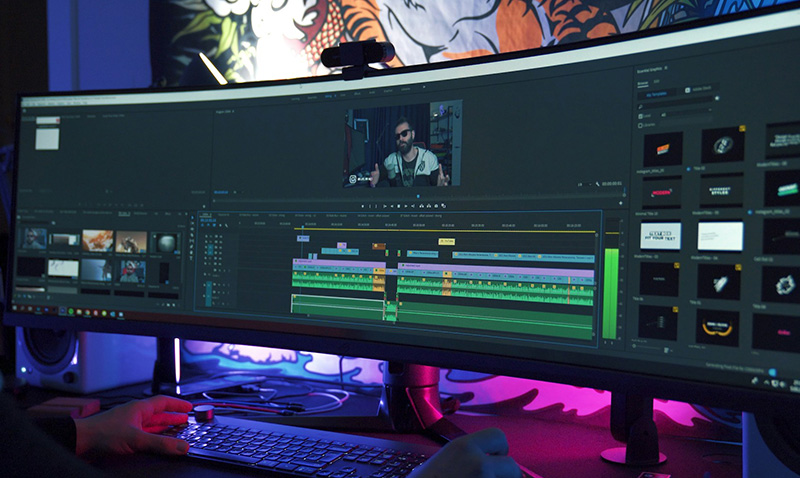Top 10 Reasons Why Developers Should Never Overlook Desktop Optimization in App and Website Development
In today's landscape of digital experiences, more and more users are relying only on their mobile devices for entertainment and various tasks. Due to a huge mobile user base, developers often find themselves immersed in the fast-paced world of mobile apps and responsive web development. While the mobile-first approach has rightfully gained attention, it is important not to overlook the significance of desktop users. Ignoring the desktop experience can result in missed opportunities and hinder the overall success of your application or website.
In this article, we will discuss the top 10 reasons why developers should never overlook desktop optimization in app and website development.
1. Broader User Base
In professional environments, desktop usage remains crucial. It is very common to find almost everyone in an office using desktops or laptops for work purposes. Hence, it is important for developers to prioritize desktop optimization.
Business professionals, content creators, and various roles from different industries often prefer desktops for their robust capabilities and larger screens. Neglecting desktop optimization could lead to a subpar user experience for these users. Engagement will be greatly affected and you might lose valuable opportunities.
Developers must recognize that a one-size-fits-all approach is never enough. Desktop optimization is crucial for accommodating the diverse preferences and needs of desktop users. This strategic approach not only ensures a broader user base but also enhances the overall accessibility of the digital project.

2. Optimized Productivity
Desktop optimization is important in enhancing user productivity by providing an environment that is suitable for tasks that require larger screens and powerful processing capabilities. Professionals working on complex applications, creative projects, or data-intensive tasks often rely on desktops to leverage these advantages. Ignoring desktop optimization can disrupt the workflows and hinder user productivity.
Developers need to understand that desktops remain a preferred choice for specific tasks. By prioritizing desktop optimization, developers not only cater to the needs of users requiring enhanced productivity but also contribute to a more versatile experience. Hence, developers should never overlook the importance of considering both desktop and mobile platforms in the development process.
3. Enhanced User Engagement
Desktop optimization is crucial for providing users with an enriched and immersive experience. Desktop users often expect a higher level of sophistication and functionality. Ignoring the desktop platform may fail to engage users more deeply through advanced features and improved usability. Developers should recognize that desktops offer a canvas for more intricate designs and functionalities that can hugely improve overall user engagement.
For example, while more and more users prefer to edit videos on their smartphones, can you imagine how painful it is for a professional editor to edit intensive video projects by looking at a small screen?
By incorporating desktop optimization into the development process, developers can ensure an enjoyable experience for desktop users.

4. Consistency Across Devices
Developing with both desktop and mobile optimization in mind ensures a seamless and consistent user experience across various devices. In today's multi-device landscape, users often transition between desktops and mobile devices throughout the day. Ignoring desktop optimization can result in disjointed experiences, hindering user satisfaction and potentially driving them away.
Consistency in user experience fosters a sense of reliability and professionalism. Both reliability and professionalism are particularly crucial for websites or applications targeting business audiences. Imagine you are browsing a visually appealing website on your smartphone, but then find the same website with an unoptimized and uglier look on your desktop. How will you feel?
By prioritizing desktop optimization, developers can create a harmonized experience that caters to users' preferences, regardless of the device they choose.
5. Complex Tasks and Multitasking
Consider graphic design software or project management tools that require handling multiple tasks simultaneously. These applications often have intricate interfaces and demand precise control, making desktops the preferred choice. Ignoring desktop optimization in the development of these tools could limit functionality and impact overall usability.
For example, a graphic design application optimized for desktop use may provide advanced features such as pixel-level editing and complex layer management. Such capabilities might be challenging to replicate on smaller mobile screens. Prioritizing desktop optimization ensures that users can efficiently execute complex tasks and leverage the full potential of the application's features.

6. Development Efficiency
Consider a scenario where developers initially only focus on mobile optimization for an e-commerce platform. Later, when realizing the importance of desktop users, they need to overhaul the entire user interface and experience to accommodate larger screens. This not only leads to redundant efforts but can also introduce inconsistencies between the mobile and desktop versions. Hence, developers should always work on both desktop and mobile optimization from the beginning, even if the majority of the target users are mobile users. This approach minimizes rework and accelerates development timelines should your client decide to focus on the desktop version too in the future.
7. E-commerce Considerations
In addition to mobile users, desktop users also frequently engage in online shopping, Neglecting desktop optimization for e-commerce platforms is never a great idea.
Consider an e-commerce website that initially focuses solely on mobile optimization. While mobile users might have a satisfactory experience, desktop users might encounter challenges navigating the site. Without desktop optimization, an e-commerce website may not be equipped with desktop-specific features such as a comprehensive product catalog, advanced filters, and a user-friendly checkout process. By prioritizing desktop optimization, developers can create an e-commerce platform that caters to the distinct needs and preferences of desktop shoppers. This can help to avoid driving desktop shoppers away.
8. SEO Benefits
Search engines, including Google, prioritize websites that provide a consistent and positive user experience across various devices. Websites with both desktop and mobile optimization tend to have lower bounce rates, higher engagement, and better overall performance metrics. Search algorithms are more likely to rank these websites higher in search results because they can provide great user experiences for users across various devices. By overlooking desktop users, developers risk missing out on valuable SEO benefits that can significantly enhance a website's online visibility.
9. Technological Advancements
Despite the huge increase in mobile user base, desktop technologies are still here and continue to advance. Ignoring desktop development means missing out on leveraging the latest technologies that can enhance the overall user experience.
For example, the capabilities of modern desktop browsers, such as improved graphic rendering and support for advanced functionalities, enable developers to create more sophisticated applications. These advancements open doors to creating feature-rich desktop experiences that go beyond the limitations of mobile platforms.
Moreover, desktop environments often offer greater processing power and memory, allowing developers to implement resource-intensive features seamlessly. Applications that harness the power of desktop technologies can provide users with faster load times, smoother interactions, and enhanced performance. By staying attuned to the latest advancements in desktop development, developers can ensure their applications remain competitive.

10. Future-Proofing Your Application
User preferences can shift anytime. Developing with desktops in mind future-proofs your application or website. It ensures adaptability to changing user behaviours and technological advancement in the future.
By acknowledging the enduring significance of desktop usage, developers can build applications that stand the test of time and remain relevant in evolving technological landscapes. Ignoring desktop development may lead to a loss of potential users and hinder the longevity of an application, especially if there's a resurgence in desktop usage trends.
Conclusion
In conclusion, the desktop experience remains a pivotal aspect of digital development. Developers who recognize and embrace the significance of desktop optimization alongside mobile considerations are better positioned to create engaging solutions. Balancing both mobile and desktop ensures a holistic approach that caters to the diverse needs of today's users.
Whether it is a website or an application, if you are looking to engage your audience effectively, consider reaching out to Appnicorn. We are a leading provider of innovative and seamless development solutions.